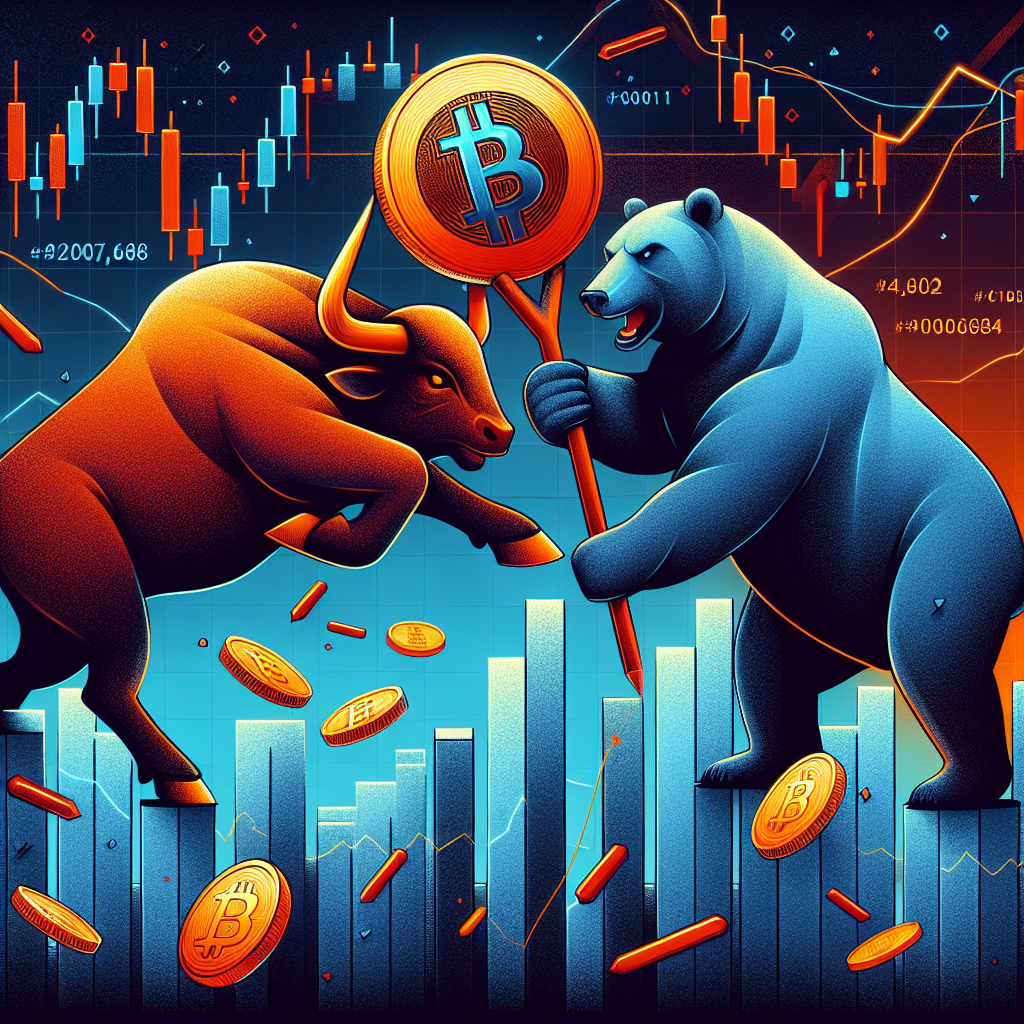US-China Tariff Drama Spurs Crypto Market Turmoil: Beyond Retail Trader Reactions
On Friday, the cryptocurrency market witnessed a significant downturn, with retail traders quickly attributing the chaos to the news of former US President Donald Trump announcing a 100% tariff on Chinese goods. As is often the case during abrupt price slumps, traders and market observers looked for a singular event to blame, but analysts argue that the story runs much deeper. The incident serves as a striking example of how geopolitical tensions, market psychology, and inherent systemic risks converge to shape crypto price action and investor sentiment.
Retail Trader Psychology and the Search for Simple Explanations
According to recent commentary from leading crypto market intelligence firm Santiment, retail traders often display a tendency toward “rationalization” during periods of sharp market decline. This is the impulse to pin complex, multifaceted market events on a single external trigger. In this case, the announcement of sweeping new tariffs by Trump on Chinese imports became the scapegoat.
After the price drop, online discussions about US-China tariffs surged across social platforms frequented by crypto traders. Santiment noted that this wave of conversation was less about factual causality and more about a collective need among traders to explain losses and make sense of market turbulence.
“This is typical ‘rationalization’ behavior from retailers, who need to point to a singular event as the reason for a cataclysmic downturn in crypto,” Santiment observed. The search for a scapegoat, while emotionally satisfying, can obscure the deeper mechanisms at play underneath the market’s surface.
More Than Tariffs: The Hidden Risks Uncovered
While the US-China tensions and tariff threats certainly rattled nerves, market analysts highlight that the root causes of the selloff are more intricate. A report from The Kobeissi Letter, a respected financial news source, emphasized the critical roles of excessive leverage and risk concentration within the cryptocurrency sector. The crypto market, at the time, was especially vulnerable due to an overwhelming long bias among traders, meaning more expecting prices to rise than to fall.
Data from derivatives platforms showed roughly $16.7 billion in long positions liquidated, overshadowing just $2.5 billion in shorts. This nearly 7-to-1 ratio contributed to a cascade of forced selling as stop-losses and margin calls triggered en masse. As a result, Bitcoin—the leading cryptocurrency—plunged more than 10% in just 24 hours, at one point dipping as low as $102,000 against USDT on major exchanges.
The Domino Effect of Liquidations and Market Price Action
Liquidation cascades of this magnitude often lead to outsized volatility, not just for Bitcoin but for the broader digital asset landscape. When a large percentage of traders pile into the same directional bet, even minor price moves can set off a chain reaction. With stop-losses and liquidation levels tightly grouped, one break in support can trigger a feedback loop, causing prices to spiral downward in a short span.
At the time of publication, Bitcoin was trading around $109,910, marking a 10% decline over the previous seven days. Such swings underscore the market’s sensitivity not only to headlines, but also to the internal dynamics of leverage and crowd behavior.
Geopolitical Uncertainty: The Double-Edged Sword for Crypto
While macroeconomic and geopolitical factors have historically had unpredictable effects on cryptocurrency markets, the current episode highlights a notable shift. Santiment suggests that the ongoing developments between the US and China will continue to play a central role in shaping retail trading decisions in the near future.
On one hand, positive developments—such as signs of successful dialogue or de-escalation between Trump and Chinese President Xi Jinping—could buoy market sentiment and prompt a rebound. On the other, if tensions worsen, retail investors and speculators might brace for further volatility, with some even predicting a potential fall of Bitcoin below $100,000.
“Expect for the ‘Bitcoin sub-100K’ prediction floodgates to begin opening up,” Santiment concluded. “Bitcoin, whether we like it or not, is behaving more like a risk asset than a safe haven during times of country tensions.”
Risk Asset or Safe Haven? Changing Perceptions in Times of Crisis
The traditional narrative around Bitcoin is that it serves as a safe haven asset—a digital gold—to shield investors from global uncertainty. However, the latest volatility challenges that notion. Instead of acting as a store of value, Bitcoin and its peers increasingly behave like risk assets, responding quickly to negative sentiment, systemic risks, and headline-driven market shocks.
This shift in perception is especially pronounced among retail investors, who are often first to react to news and move markets. Recent events suggest that, at least for now, cryptocurrencies remain closely tied to the broader risk-on/risk-off behavior that characterizes global financial markets. In risk-off periods triggered by geopolitical fears, digital assets are far from immune.
Measuring Sentiment: The Fear & Greed Index Plummets
One of the starkest illustrations of the psychological fallout from the downturn is the Crypto Fear & Greed Index. This influential metric, which quantifies overall market sentiment on a scale from 0 (extreme fear) to 100 (extreme greed), plunged to a reading of 27—firmly in the “Fear” zone—on Saturday. Just the prior day, the index stood at 64, representing “Greed” and the market’s most optimistic outlook in nearly six months.
The sudden swing from euphoria to fear is emblematic of crypto market sentiment, which is known for its extreme highs and lows. When greed dominates, leverage builds up and valuations soar, but when fear returns, panic selling and volatility often follow.
Lessons for Traders: Navigating Markets Amid Uncertainty
The current episode serves as a crucial reminder for retail and institutional traders alike. In markets as young and rapidly evolving as cryptocurrency, external shocks—from trade tariffs to regulatory crackdowns—can quickly become focal points for speculation and fear. However, the underlying dynamics of leverage, liquidity, and crowd psychology are often equally or more important in determining price direction.
For prudent investors, the lesson lies in keeping perspective when market-moving news hits. While geopolitics matters, focusing exclusively on the latest headline may lead to poor decision-making. Instead, understanding the structure of derivatives markets, position imbalances, and the emotional state of the market can offer a more holistic view.
Looking Ahead: What Will Shape Crypto’s Next Move?
As the US-China situation continues to unfold, analysts will be keeping a close watch on any new developments that could impact global trade and financial flows. Meanwhile, the internal dynamics of crypto—such as changes in open interest, leverage ratios, and on-chain movements—will bear close scrutiny for anyone seeking to anticipate the next big move.
Ultimately, the notion that a single news event can wholly explain a complex market move is both misleading and potentially dangerous. As the cryptocurrency ecosystem matures, learning to navigate the intersection of headline risk, market structure, and social sentiment will be essential for traders aiming to survive and profit in periods of turmoil.
Conclusion
The recent crypto market plunge, though widely pinned on US-China trade tensions and the rhetoric of political leaders, underscores the multifaceted nature of financial markets. Behind every major move lie not just news catalysts, but also systemic vulnerabilities and the ever-present influence of crowd psychology. For retail and institutional investors alike, recognizing this complexity and resisting the urge to oversimplify will be key to weathering the storms that lie ahead.


















